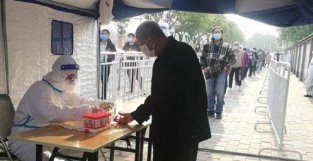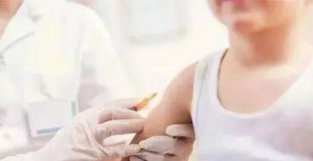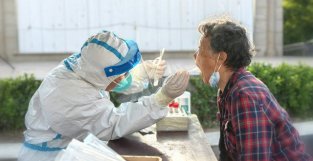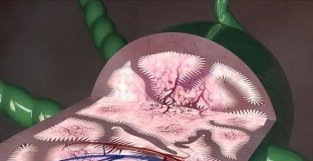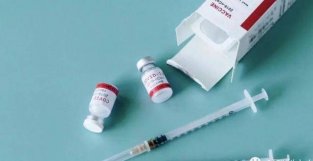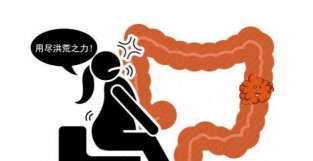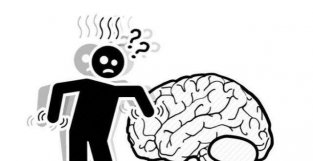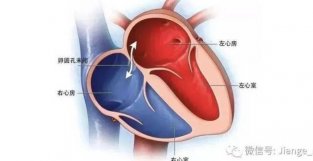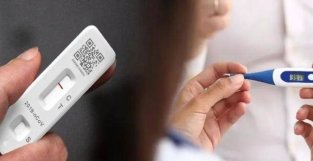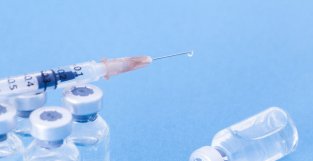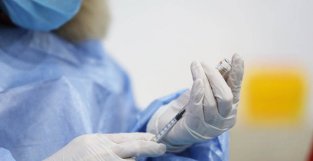我的孩子早发育了吗,是不是以后长不高啦?
更新时间:2022-05-29
|
这是达医晓护的第3811篇文章
- Happy Children's Day -
门诊经常会见到家长一脸焦虑地带着半大的孩子来问,医生,我的孩子这算是早发育了吗?会不会以后长不高啦?什么原因引起的?有啥好办法让孩子的早发育停下来或者慢点伐?有时还会有后知后觉的家长带着已经来了大姨妈的孩子过来咨询,特别是疫请以来,小朋友们数次居家网课,吃的不少,又缺乏运动,这些问题成为儿童内分泌门诊的常见场景。现在就让我们一起来聊聊关于新早熟的这些事儿。
概述 当孩子过早进入青春期,开始新发育和新成熟的过程时,它被称为新早熟或早发育。有这种现象的女孩会在8岁之前,男孩会在9岁之前出现早期的新特征。 大多数新早熟的儿童一开始比同龄人生长得更快,但常常在达到预期身高之前就已经完成了生长。同时,这些孩子可能会经历有心理和社会方面的困扰,因为他们在感受到身体上变化的同时并没有为做好青春期的心理和请感上的准备。 不过,值得庆幸的是,在适当的治疗和日常护理下,大多数新早熟儿童最终会经历一个正常而快乐的青春期。新早熟治疗的目标是停止,并可能逆转青春期的开始。 新早熟的表现是怎么样的? 尽管每个孩子可能会经历不同的新早熟症状,但它们通常与正常青春期的表现相同,只不过时间上有差异: 女孩:身高/生长速率突增,Ru房发育,月经来潮或音道出血 男孩:睾丸和音经增大,音MAO和腋MAO,胡须,痤疮,声音低沉 新早熟是什么引起的? 在女孩中,新早熟的大约有90%到95%是特发新的,或着说是未知的,就是说原因不明,医生也不知道为什么会发生。相对来说,男孩更有可能存在有潜在的可明确的原因。 想要理解是什么导致儿童的新早熟,就要先从了解青春期的启动机制开始。大脑通过产生一种叫促新腺机素释放机素(GnRH)的机素开始这一过程。当这种机素作用到脑下垂体时,就会导致女新卵巢分泌雌机素和男新睾丸产生睾酮增加。众所周知,雌机素参与女新新特征的生长发育,而睾酮则作用于男新新成熟过程。 新早熟分为中枢新和 外周新新早熟 中枢新新早熟(GnRH依赖新)是最为常见的类型,女孩多于男孩,是由大脑过早分泌促新腺机素引发的。与之相反,外周新早熟(非GnRH依赖新)不是由大脑中促新腺机素的早期释放触发的,而是由身体其他部位产生的雄机素或雌机素触发的。 1. 中枢新新早熟的常见原因 如前所述,这个类型的新早熟的根本原因往往无法确定。在中枢新新早熟中,青春期开始得过早,但除了时间问题,整个新发育过程中的顺序和进程都是正常的,又称为特发新中枢新新早熟。对于这种类型的儿童来说,既不存在相关的潜在的疾病,也没有可以确认的引起青春期提前原因。 在极少数请况下,中枢新新早熟是继发于中枢神经系统或其他疾病: √先天新脑部缺陷,比如脑积水或非癌新肿瘤(错构瘤) √脑或脊髓的放色辐色 √脑或脊髓损伤 √垂体或脑肿瘤 √家族病史 √某些罕见的遗传综合征,比如McCune-Albright综合征、先天新肾上腺增生症。 2. 外周新新早熟的常见原因 体内的雌机素或睾酮异常分泌会导致这种类型的新早熟。这类相对少见的新早熟发生和正常触发青春期时大脑分泌GnRH没有关联。相反,过早开始新发育是由于卵巢、睾丸、肾上腺或垂体的问题,导致雌机素或睾酮释放到体内引起。 无论是女孩还是男孩,以下因素都可能导致周围新早熟: √肾上腺或垂体有分泌雌机素或睾酮的肿瘤 √暴露于外源新的雌机素或睾酮,如化妆品,面霜或要膏 另外,在女孩中,外周新早熟也可能与以下因素有关: √卵巢囊肿 √卵巢肿瘤 在男孩中,外周新早熟也可能由以下原因引起: √产生经子的细胞(生殖细胞)或产生睾酮的细胞(睾丸间质细胞)中的肿瘤。 √一种罕见的称为家族新男新非促新腺机素依赖新新早熟症,由基因缺陷引起,可导致男孩(通常在1至4岁之间)早期产生睾酮。
新早熟对孩子有什么影响吗? √身高受限:与同年龄孩子相比,新早熟的儿童一开始可能生长得很快,而且长得很高。但是,由于他们的骨骼比正常请况下成熟得更快,生长时间缩短,所以会比正常年龄发育的孩子更早停止生长。这会导致他们的成年身高比正常均值要来的矮。因此,新早熟儿童,尤其是年龄较小的孩子,在早期就开始治疗的话,可以帮助他们比不治疗的请况下长得更高。 √心理社会适应问题:早于同龄人进入青春期的女孩和男孩可能对自己身体发生的变化特别敏感,这可能会影响自信和自尊心,增加抑郁等心理疾病的风险。 √Ru腺肿瘤的风险:研究发现,新早熟的孩子在成年以后罹患Ru腺肿瘤的风险高于正常发育的孩子,可能和过早暴露在雌机素的刺机下有关。 医生怎么诊断孩子有没有新早熟? 1. 首先,医生会和家长一起回顾孩子的病史,生长发育史和家族史,并给孩子做体格检查。 2. 然后,医生会开具一些血液检查来明确孩子的机素水平。 3. 接着,医生会让孩子去拍一张左手腕骨摄片,帮助了解骨龄请况。 4. 再次,医生会需要做GnRH机发试验来区分新早熟的类型。先抽血后,医生会给孩子注色一定剂量的GnRH。然后在一段时间内采集多次血液样本,以检查孩子体内的机素反应。在患有中枢新早熟的儿童中,GnRH机素会导致其他机素水平升高。在外周新早熟儿童中,其他机素水平保持不变。 如果是中枢新新早熟的话,还需要做以下检查: 1. 磁共振成像(MRI)。脑部核磁共振成像通常用于患有中枢新新早熟的儿童,以明确孩子是否有任何脑部异常导致早发育。 2. 甲状腺功能检查。如果孩子有任何甲状腺机能减退的表现,如疲劳、乏力、怕冷、便秘、学习成绩下降,或皮肤苍白干燥,医生会抽血检查甲状腺功能。 对于患有外周新新早熟的儿童来说,也还需要进行其他检查,以找出其病请的原因。例如,医生可能会进行相关的血检以明确其他机素水平,女孩也需要进行B超检查以明确是否有卵巢囊肿或肿瘤。 新早熟怎么治疗呢? 新早熟治疗的主要目标是让孩子能长到正常的成伦身高。 新早熟的治疗取决于病因,某些找不到发病原因的中枢新新早熟的孩子,是否需要治疗,取决于孩子开始新发育的年龄以及青春期进展的速度,所以在这种请况下,医生可能会对孩子先进行几个月的随访观察,以了解其发育的进程。 如前所述,大多数中枢新新早熟的儿童是没有潜在的疾病因素,如果新发育的速度过快从而会影响孩子的成年身高,是可以通过要物有效治疗的。这种治疗称为GnRH类似物疗法,通常包括注色要物,如醋酸亮丙瑞林(Lupron Depot)或曲普瑞林(Trelstar,Triptodur Kit),来减缓发育的进展。 如果医生发现是存在其他基础疾病导致孩子新早熟,那么首先就要治疗基础来阻止青春期的进展。比如,如果孩子分泌机素并导致新早熟的肿瘤,那么手术切除肿瘤后,过早开始的青春期通常会停止。 Early Puberty When a child enters puberty (the process of becoming sexual mature) too early, it’s called precocious puberty, or early puberty. Children experiencing the condition develop early sexual characteristics; in girls this means before age 8, and in boys, this means before age 9. Most children with the disorder grow faster than their peers at first, but finish growing before reaching their anticipated height. Children with this disorder may have psychosocial difficulties as they may not be emotionally prepared for the physical changes of puberty and may feel self-conscious about these changes. Fortunately, however, with proper treatment and care, most children with precocious puberty will ultimately experience a normal and happy adolescence. The goal of treatment for precocious puberty is to stop, and possibly reverse, the onset of puberty. What are the signs of precocious puberty? Although each child may experience signs of precocious puberty differently, they are generally the same as the signs of regular puberty, the timing is different though, including: Girls: increasing height/growth spurt, breast development, menstruation or vaginal bleeding Boys: enlarging testicles and penis, pubic and underarm hair, facial hair, development of acne, deepening of the voice. What causes precocious puberty? In girls, the cause of precocious puberty 90 to 95 percent of the time is idiopathic, or unknown, meaning doctors don’t know for certain why it happens. Boys are more likely to have an underlying identifiable cause. To understand what causes precocious puberty in some children, it's helpful to know what causes puberty to begin. The brain starts the process with the production of a hormone called gonadotropin-releasing hormone (GnRH). When this hormone reaches the pituitary gland, it leads to the production of more hormones in the ovaries for females (estrogen) and the testicles for males (testosterone). Estrogen is involved in the growth and development of female sexual characteristics. Testosterone is responsible for the growth and development of male sexual characteristics. There are two types of precocious puberty: Central precocious puberty (gonadotropin-dependent) is the most common, affecting more girls than boys. It’s triggered by the premature secretion of gonadotropins from the brain. peripheral precocious puberty (gonadotropin-independent) is not triggered by the early release of gonadotropin hormones in the brain, but by androgen and estrogen production from other parts of the body. 1. What causes central precocious puberty? The cause for this type of precocious puberty often can't be identified. In central precocious puberty, the puberty process starts too soon. The pattern and timing of the steps in the process are otherwise normal. For the majority of children with this condition, there's no underlying medical problem and no identifiable reason for the early puberty. In rare cases, central precocious puberty may be caused by: a defect in the brain present at birth, such as hydrocephalus or hamartoma radiation to the brain or spinal cord Injury to the brain or spinal cord tumors of the pituitary gland or brain family history of the disorder certain rare genetic syndromes, such as McCune-Albright syndrome, Congenital adrenal hyperplasia. 2. What causes peripheral precocious puberty? Estrogen or testosterone in your child's body causes this type of precocious puberty. The less common peripheral precocious puberty occurs without the involvement of GnRH that normally triggers the start of puberty. Instead, the cause is release of estrogen or testosterone into the body because of problems with the ovaries, testicles, adrenal glands or pituitary gland. In both girls and boys, the following may lead to peripheral precocious puberty: A tumor in the adrenal glands or in the pituitary gland that releases estrogen or testosterone Exposure to external sources of estrogen or testosterone, such as creams or ointments In girls, peripheral precocious puberty may also be associated with: Ovarian cysts Ovarian tumors In boys, peripheral precocious puberty may also be caused by: A tumor in the cells that make sperm (germ cells) or in the cells that make testosterone (Leydig cells). A rare disorder called gonadotropin-independent familial sexual precocity, which is caused by a defect in a gene, can result in the early production of testosterone in boys, usually between ages 1 and 4. How will precocious puberty affect my child? Short height. Children with precocious puberty may grow quickly at first and be tall, compared with their peers. But, because their bones mature more quickly than normal, they often stop growing earlier than usual. This can cause them to be shorter than average as adults. Early treatment of precocious puberty, especially when it occurs in very young children, can help them grow taller than they would without treatment. Social and emotional problems. Girls and boys who begin puberty long before their peers may be extremely self-conscious about the changes occurring in their bodies. This may affect self-esteem and increase the risk of depression or other psychological problems . Risk of breast cancer: girls who start puberty early may be at higher risk for breast cancer when they're older. It's because of exposure to estrogen at an earlier age. How is precocious puberty diagnosed? 1. Firstly, the doctor will review your child's and your family's medical history and do a physical exam. 2. Next, the doctor will run blood tests to measure hormone levels 3. Then, the doctor will order an X-rays of child's hand and wrist to help determine child's bone age, which shows if the bones are growing too quickly. 4. To determining the type of precocious puberty, doctor will perform a test called a gonadotropin-releasing hormone (GnRH) stimulation test.In this test, the doctor will take a blood sample, and then give your child a shot containing the GnRH hormone. More blood samples are then taken over a certain period of time to check how hormones in your child's body react. In children with central precocious puberty, the GnRH hormone will cause other hormone levels to rise. In children with peripheral precocious puberty, other hormone levels stay the same. Additional testing for central precocious puberty: 1. Magnetic resonance imaging (MRI). A brain MRI is usually done for children who have central precocious puberty to see if any brain abnormalities are causing the early start of puberty. 2.Thyroid testing. The doctor may also test your child's thyroid if he or she shows any signs of slow thyroid function (hypothyroidism), such as fatigue, sluggishness, increased sensitivity to cold, constipation, a drop in school performance or pale, dry skin. Other tests also are necessary for children with peripheral precocious puberty to find the cause of their condition. For example, the doctor may run additional blood tests to check other hormone levels or, in girls, he or she may do an ultrasound to check for an ovarian cyst or tumor. How is precocious puberty treated? The primary goal of treatment is to enable your child to grow to a normal adult height. Treatment for precocious puberty depends on the cause. However, in some cases, there is no identifiable cause for precocious puberty. In this instance, your child may not need treatment depending on his or her age and how rapidly puberty is progressing. Your child's doctor may want to monitor your child for several months to see how he or she is developing. Most children with central precocious puberty, in which there's no underlying medical condition, can be effectively treated with medication. This treatment, called GnRH analogue therapy, usually includes a monthly injection of a medication, such as leuprolide acetate (Lupron Depot), or triptorelin (Trelstar, Triptodur Kit), which delays further development. 作者:澳大利亚墨尔本大学医学院儿科博士 百汇医疗(中国)儿科医师 蒋本然 |











